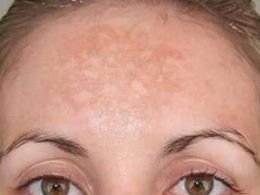Introduction:
Hair loss can be a distressing experience for individuals, prompting them to seek solutions that promise to restore their luscious locks. With a multitude of hair-loss treatments available on the market, it can be challenging to navigate through the sea of options and determine what truly works. In this comprehensive guide, we explore the efficacy and limitations of various hair-loss treatments, shedding light on what you can expect when searching for a solution.
Understanding the Underlying Causes:
Before delving into the different treatments, it is crucial to understand the underlying causes of hair loss. From genetic predisposition and hormonal imbalances to nutritional deficiencies and medical conditions, there are numerous factors that can contribute to hair thinning and loss. Identifying the root cause of your hair loss can help guide you toward the most appropriate treatment options.
Topical Treatments: Minoxidil and Finasteride:
Minoxidil and finasteride are two widely recognized topical treatments for hair loss. Minoxidil, available as a foam or solution, is applied directly to the scalp to stimulate hair growth. It is effective for individuals experiencing androgenetic alopecia, also known as male or female pattern baldness. Finasteride, an oral medication, helps block the hormone dihydrotestosterone (DHT) that contributes to hair loss in men. Both treatments have shown positive results, with minoxidil promoting hair growth in about 40% of users and finasteride proving effective in reducing further hair loss in men. However, it is important to note that the results may vary between individuals, and these treatments require ongoing use to maintain their effects.
Platelet-Rich Plasma (PRP) Therapy:
Platelet-Rich Plasma (PRP) therapy has gained popularity as a regenerative treatment for hair loss. The procedure involves drawing the patient’s blood, processing it to concentrate the platelets, and injecting the platelet-rich plasma into the scalp. The growth factors present in PRP are believed to stimulate hair follicles and promote hair regrowth. While PRP therapy has shown promising results in some individuals, its efficacy may vary, and multiple sessions are usually required to achieve optimal outcomes. Further research is needed to fully understand its long-term effectiveness and its potential as a standalone treatment or in combination with other therapies.
Hair Transplantation: Follicular Unit Transplantation (FUT) and Follicular Unit Extraction (FUE):
For individuals seeking a more permanent solution to hair loss, hair transplantation techniques such as Follicular Unit Transplantation (FUT) and Follicular Unit Extraction (FUE) offer viable options. FUT involves removing a strip of scalp from the donor area and transplanting it into the recipient site, while FUE involves extracting individual hair follicles and implanting them into the desired area. These procedures require skillful execution and are typically performed by experienced surgeons. They provide natural-looking results, and the transplanted hair follicles continue to grow normally. However, it is essential to have realistic expectations, as the success of the procedure depends on factors such as donor hair availability, the expertise of the surgeon, and individual factors like hair density and scalp condition.
Alternative and Emerging Treatments:
In addition to the conventional treatments mentioned above, several alternative and emerging therapies are being explored. These include low-level laser therapy (LLLT), scalp microneedling, stem cell therapy, and virtual reality-based hair stimulation. While some individuals claim positive results from these treatments, the scientific evidence supporting their efficacy is still limited
. It is advisable to approach these options with caution and consult with reputable experts in the field.
Conclusion:
Finding the right hair-loss treatment can be a complex journey, and what works for one person may not work for another. It is essential to consult with medical professionals specializing in hair loss and consider the underlying cause of your specific condition. By understanding the efficacy and limitations of different treatments, you can make informed decisions and set realistic expectations. Remember, maintaining a healthy lifestyle, managing stress, and adopting proper hair care practices can also contribute to the overall health of your hair.












